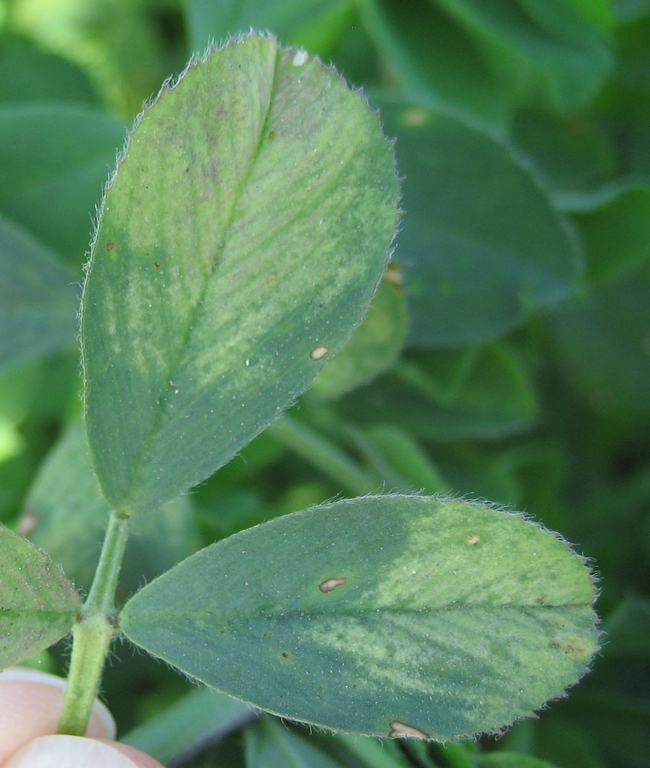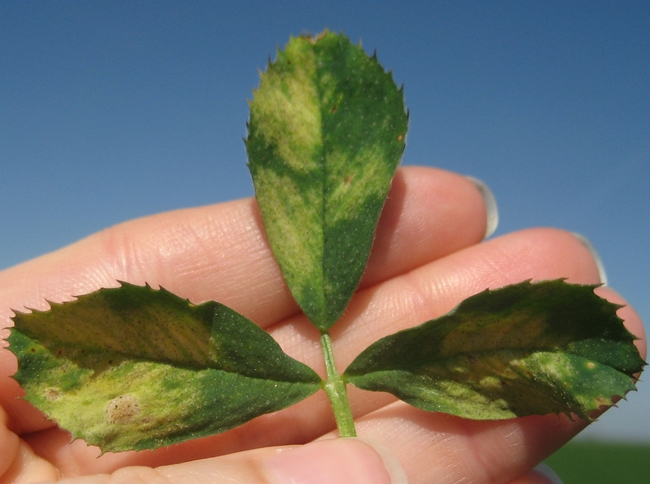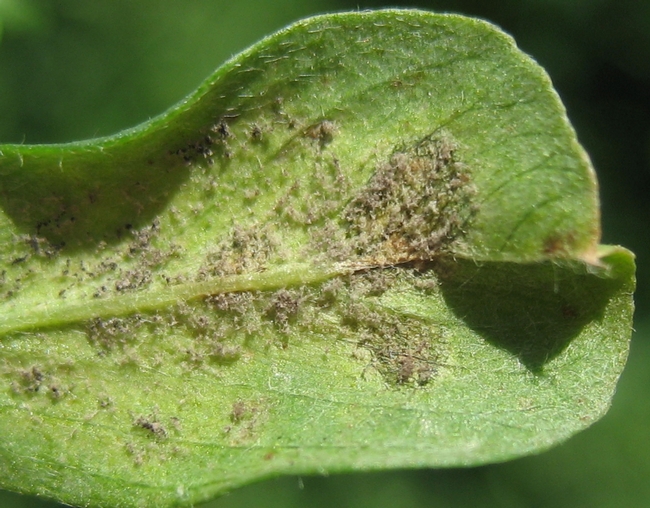


This fungus is an obligate parasite (meaning it can stay alive only as long as the plant tissue on which it is feeding is alive) so it usually doesn’t kill its host. However, individual leaves may die and leaves fall off the stem prematurely. When infection is heavy, the loss of leaves prior to harvest can reduce yield and quality.
Environmental conditions required for this disease are cool, moderate temperatures (from 40-800F but with optimum around 650F) with rain or high humidity because moisture is required for spore germination. With these requirements it is no wonder that in the San Joaquin Valley symptoms are usually observed in late winter, early spring and late fall but not much if at all in summer.
Most varieties have some level of resistance and plants do not seem to have long term damage from infection. No studies have been conducted to determine if fungicide applications are justified. If infection is widespread in early spring, harvest early if possible. Removal of infected leaves will reduce the number of spores available to infect new leaves. Once it turns warm, the disease is hard to find.
Just one more note: Current thinking by taxonomists is that this “fungus” Peronospora trifoliorum and related organisms, such as Phytophthora and Pythium spp., aren’t really fungi but more closely related to algae. But for practical purposes, I still call them fungi!